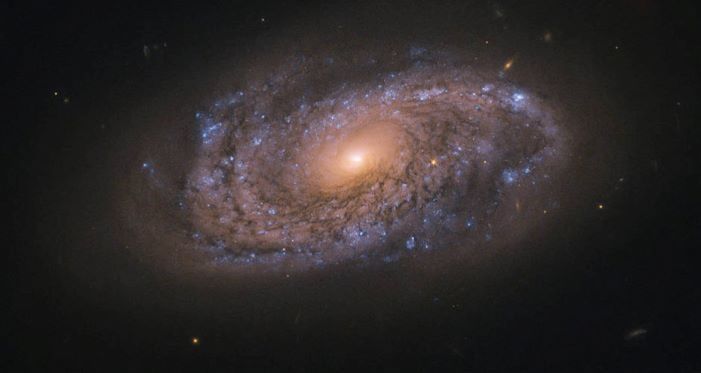How PYHIIEXTRACTOR enhances the study of bright celestial bodies
PYHIIEXTRACTOR detects the main characteristics (positions and radii) of lumpy ionized regions. A code outperforms similar astronomical tools. The work was selected as the first paper in the newly created British journal RASTI.

Ph.D. student Alejandra Lugo Aranda from the Institute of Astronomy (IA) of the UNAM wrote the first article in the Royal Astronomical Society's (RAS) new journal RAS Techniques and Instruments (RASTI). She did this by making a new processing code for astronomical images.
Advised by Sebastián F. Sánchez, also from the IA, the young researcher explained that the code, called PYHIIEXTRACTOR, makes it possible to identify gas clouds where stars are born, called HII regions, which can reach a size of several hundred light years.
"The code searches for HII regions in galaxies that are relatively close to the Milky Way, and what it seeks is to differentiate between these and a component that permeates them, with the idea of differentiating them; it was designed to work with high-resolution data," explained Lugo Aranda.
The PYHIIEXTRACTOR code was developed by a university student as part of her preparation to become a doctor in the Astronomy Postgraduate Program. This tool solves an important problem for the study of celestial bodies, which was to clearly distinguish between objects in HII regions, such as young and massive stars, old evolved stars, and supernova remnants, among others.
HII regions are gaseous objects of high intensity and represent huge bursts of light, so seeing through them is difficult, as is distinguishing several objects because the light expands and the image becomes diffuse so that trying to look for a particular point is equivalent to being in front of a very bright movie screen and someone pointing a lamp towards our eyes, added Sebastián Sánchez, the IA researcher.
PYHIIEXTRACTOR detects and extracts the main features (positions and radii) of clumpy ionized regions and provides the properties of the underlying stellar population as well as an estimate of the diffuse ionized gas (DIG) component, independent of its physical properties, allowing the properties of the HII regions and the DIG to be separated.
Lugo Aranda said that to see if it worked, the university students decided to look at pictures of the spiral-shaped galaxy NGC 2906 taken by the Paranal Observatory. This galaxy has been shown to have HII regions. As if it were a dirty image, the code allows the user to "clean it up" to identify the objects of interest with greater sharpness, more detail, and information about what is there.
In addition to NGC 2906, the code has been tested with more objects to obtain better information, and with them, she hopes to develop the most important database in the world on HII regions, which is one of the main objectives of the researcher to obtain her doctorate.
PYHIIEXTRACTOR: The importance of number one
The code was compared with similar tools that have been used by another group of experts for similar purposes, which are called SOURCEXTRACTOR, HIIPHOT, and ASTRODENDRO. The results have shown that PYHIIEXTRACTOR outperforms them in aspects such as the number of recovered regions and the distribution of sizes and fluxes (an improvement that is especially noticeable for weaker and smaller regions). Hence, the newly established UK journal RASTI chose their work as the first paper it publishes, which is tantamount to a letter of introduction, Sanchez said.
"The first publication in a magazine is chosen very carefully because it is not going to be removed, so it is a source of pride that they chose Alejandra's work. Surely they had several; they had been since January with the magazine open and they put up with us a little bit so that it would be this one. It is a historical issue. It will be the first article, page one, number one. "One hundred years from now, someone who wants to write the history of science and asks what was the first article published by RASTI, that will be Lugo Aranda's article," explained the UNAM researcher.
The Royal Astronomical Society was founded in 1795 in the United Kingdom and created its journal, Monthly Notices of the Royal Astronomical Society (MNRAS), in 1827, which today is one of the most prestigious publications in the world. However, given the growing interest in studies describing collection methods, new instrumentation, or innovative data analysis procedures, they decided to create a new information medium dedicated to these topics: RASTI.
Recently, the young university student presented her results in Spain by participating in congresses in the cities of Valencia and Granada, where specialists from the University of Granada and the Astrophysics Institute of Andalusia showed interest in collaborating in the use of this tool.




